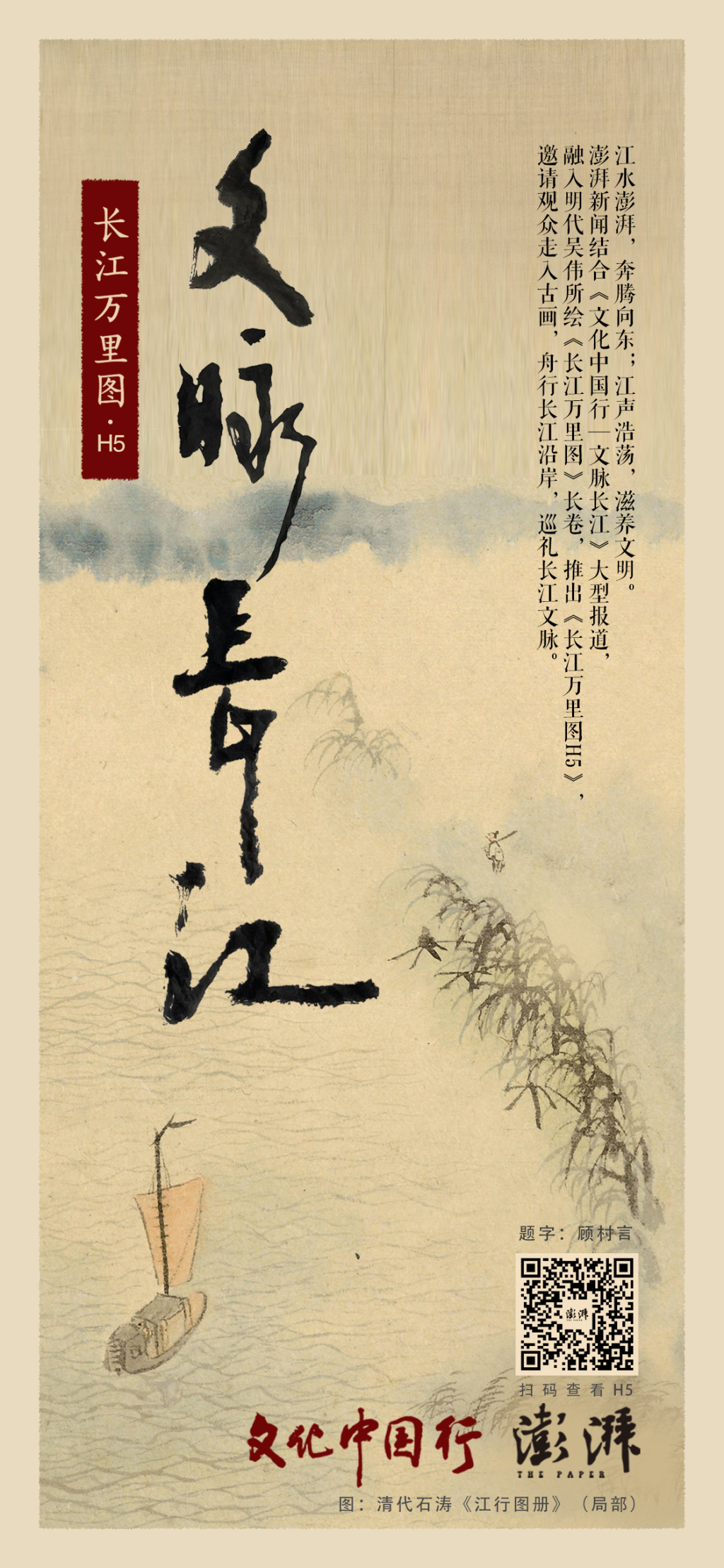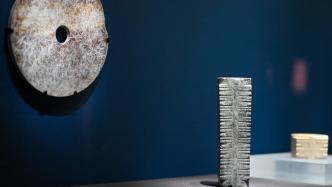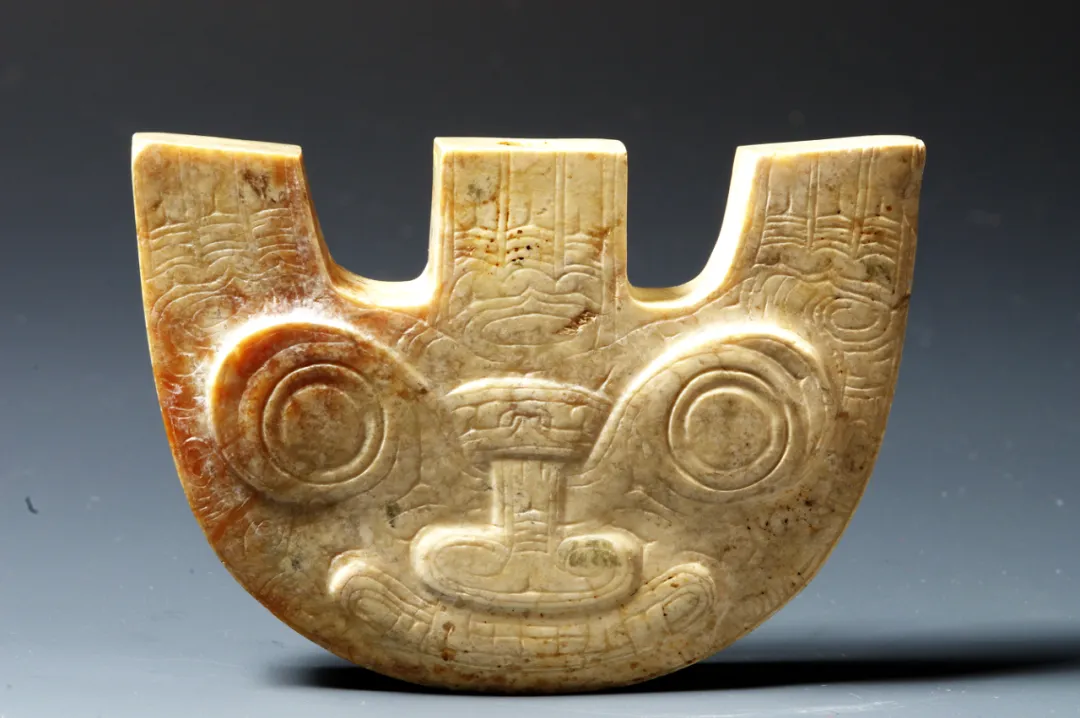
The surging waters of the Yangtze River have given birth to the long-standing and profound Yangtze River civilization.
Over the years, countless cultural treasures, including jade, lacquerware, bronze, gold and silver, and ceramics, have shone brightly, bearing vivid witness to the development of Yangtze River civilization and collectively depicting the magnificent picture of the diversity and unity of Chinese civilization. The Paper reported that on September 23rd, the large-scale special exhibition "The Eternal Flow of the River: Treasures of Ancient Civilizations in the Yangtze River Basin" officially opened to the public at the Panlongcheng Ruins Museum in Wuhan. The exhibition showcased 160 exquisite artifacts from 37 cultural and museum institutions along the Yangtze River, including over 40 first-class artifacts.
At the exhibition entrance, a jade trident-shaped vessel with animal-face patterns from the Liangzhu culture stands quietly. Its mysterious ornamentation bears striking resemblance to that of later Shang and Zhou bronze vessels. This exquisite artifact from the lower reaches of the Yangtze River bears witness to the exquisiteness and continuity of early Chinese civilization.

Liangzhu culture jade trident-shaped vessel with animal face pattern
According to organizers, the exhibition features 160 exquisite artifacts related to the Yangtze River Civilization, drawn from the collections of 37 cultural institutions, including the Chongqing China Three Gorges Museum, Hunan Museum, Hubei Provincial Institute of Cultural Relics and Archaeology, Henan Provincial Institute of Cultural Relics and Archaeology, Zhejiang Provincial Museum, Nanjing Museum, and Yangzhou Museum. The artifacts are arranged according to their time period, allowing visitors to observe the period characteristics, evolutionary processes, and craftsmanship of different artifacts, intuitively understand the cultural differences and exchanges between regions along the Yangtze River during different periods, and appreciate the heights of the ancient Yangtze River civilization.
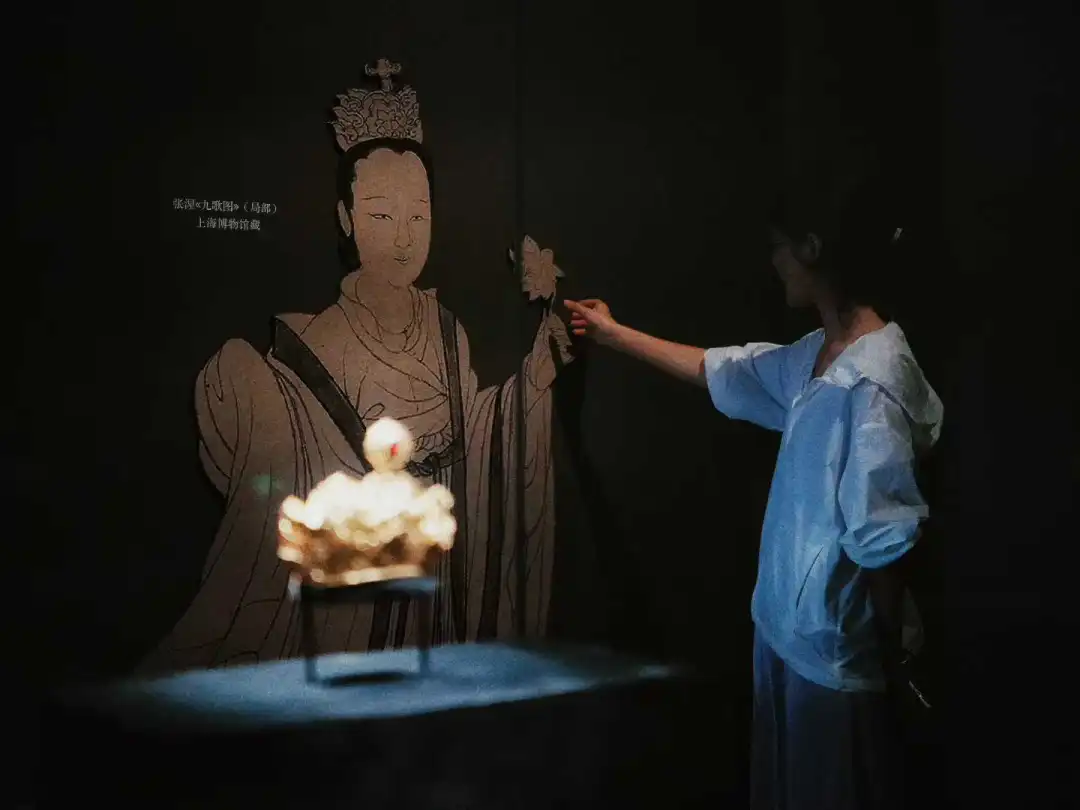
Inside the exhibition hall, the dynamic effect of rippling water instantly creates an atmosphere of "the river flows through eternity." Five sections—"Jade-like Essence," "Lacquer Rhythm and Flowing Light," "Spiritual Yi Beauty," "Glittering Light," and "The Art of Earth and Fire"—describe the five categories of artifacts: jade, lacquerware, bronze, gold and silver, and ceramics.
"Seeing people through objects, from details to the whole, through the cultural and artistic characteristics expressed by different types of objects, we can observe the overall evolution of civilization." Curator Shen Meichen introduced that the exhibition innovatively uses the texture of cultural relics as a carrier to deeply explore the diverse information such as social life, cultural exchanges, religious beliefs, etc. in different historical periods in the Yangtze River Basin.
Neolithic artifacts reflect the early cultural landscape and spiritual beliefs of the Yangtze River Basin's civilizational origins. A jade trident with animal-face patterns unearthed from the Yaoshan site in Yuhang, Zhejiang, features a main body carved with bas-relief and line carvings depicting the most representative mythical beasts of the Liangzhu culture.
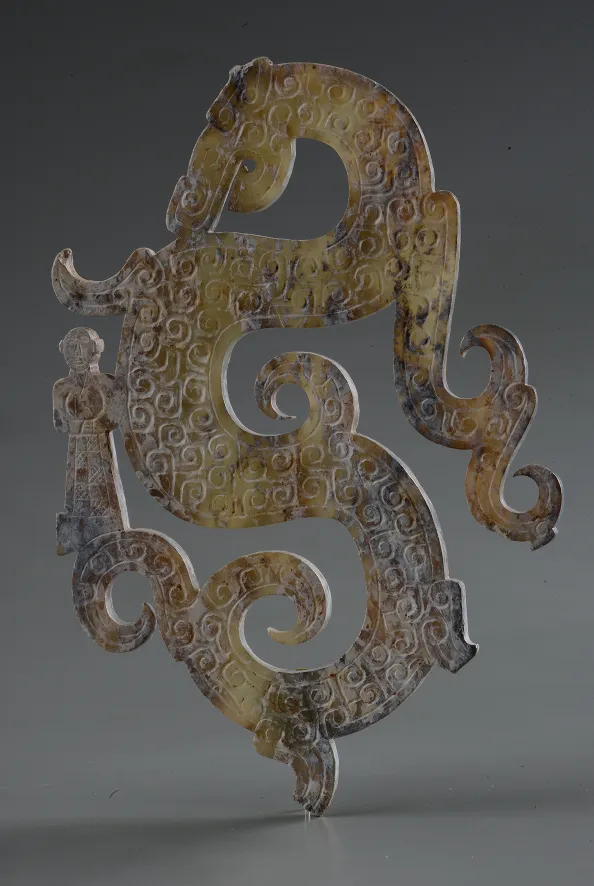
Warring States Period jade pendant in the shape of a dragon, from the collection of Jingzhou Museum
A pottery cup unearthed from the Gaomiao cultural site in Hunan Province symbolizes Neolithic worship of nature and spirits in the Yangtze River Basin. A Warring States jade pendant in the shape of a dragon, unearthed from Xiongjiazhong in Jingzhou, Hubei Province, depicts a dragon coiling and soaring into the sky. Some experts believe this symbolizes the deceased's soul being guided by the dragon to heaven.
The lacquer culture of the Yangtze River Basin is an aesthetic epic spanning 8,000 years. The "Lacquer Rhythm and Flowing Light" section highlights exquisite lacquerware from the Spring and Autumn Period to the Qin and Han Dynasties. The dragon and phoenix patterns on Chu-style lacquerware and the cloud patterns on Han-dynasty lacquerware are exquisitely detailed and complement each other beautifully.
The pig-shaped wine box unearthed from the Chu Tomb at Tianxingguan in Jingzhou, Hubei Province has a lively and cute shape and elegant and simple colors. It is not only a model of Chu lacquerware in the Warring States Period, but also a light and luxurious picnic artifact for the Chu people more than 2,000 years ago.
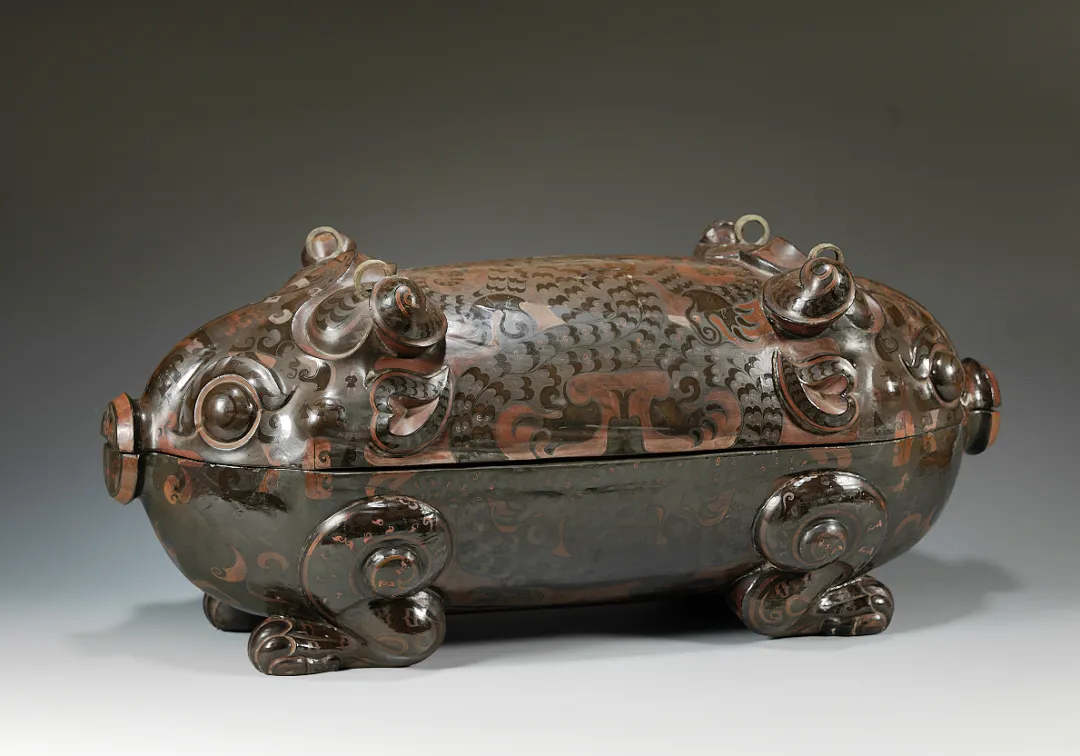
Pig-shaped wine box from the Warring States Period, from the collection of Jingzhou Museum
The exhibition combines grand themes with historical detail, with a selection of exhibits that prioritizes and prioritizes. Wandering through the exhibition halls, the elegant everyday life of the ancients is pervasive, offering visitors a visual feast. Unearthed from the Tang Dynasty silver hoard at Dingmao Bridge in Zhenjiang, Jiangsu Province, this gilt silver lidded box with a double parrot motif features a domed lid, a double-mouthed opening, a straight belly that folds down to a flat bottom, and a low ring foot. The lid is adorned with grass-carrying parrots, ten flying geese, and variations of lotus petal patterns and continuous diamond patterns, creating a delicate and exquisite design.
Unearthed from a Southern Song tomb in Nanjing, Jiangsu Province, this half-moon-shaped, thin jade comb features neatly crafted teeth made of Hetian jade. Its back is meticulously carved with three blooming peonies and two buds, depicting them in openwork. This example demonstrates the exceptional jade craftsmanship of the Jiangnan region during the Southern Song Dynasty and vividly captures the beautiful image of women wearing combs as depicted in Xin Qiji's writings.
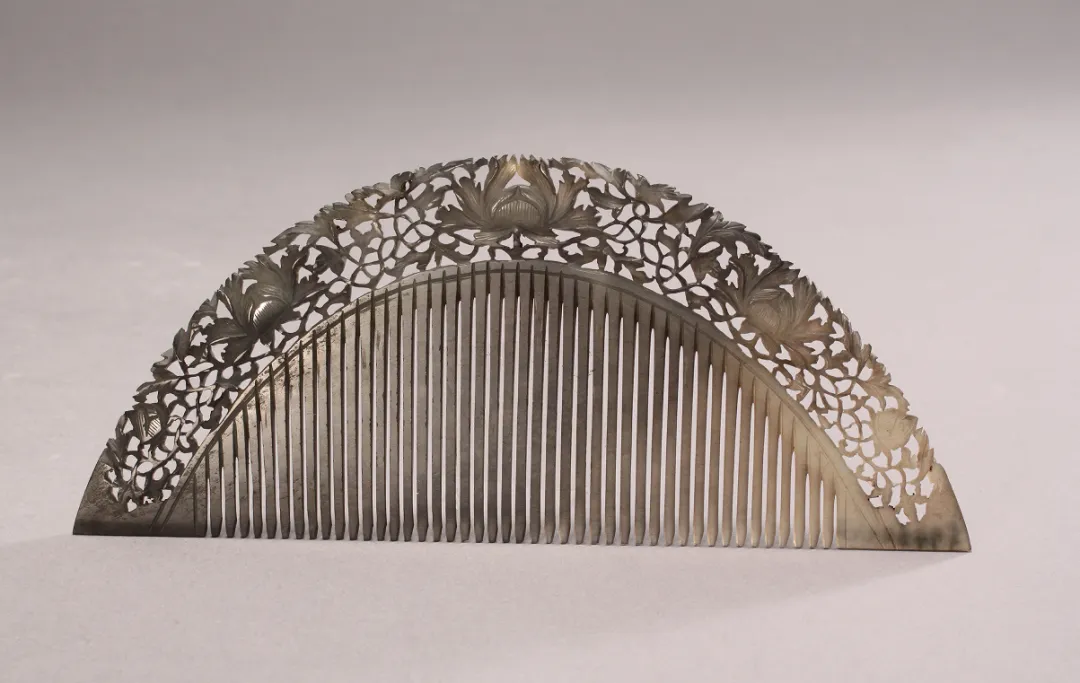
Southern Song Dynasty jade comb, Nanjing Museum Collection
In the bronze artifact exhibition area, bronze mythical beasts unearthed from the Chu Tomb at Xujialing in Xichuan, Nanyang, Henan, are uniquely dynamic and imbued with a mysterious beauty, capturing the romantic spirit of the Chu people. Twenty-five exquisite artifacts, representing the Bashu culture of the upper reaches, the Zengchu culture of the middle reaches, and the Wuyue culture of the lower reaches, not only showcase the glorious history of bronze civilization across the Yangtze River but also bear witness to the dialogue and integration between the Yangtze and Yellow River civilizations.
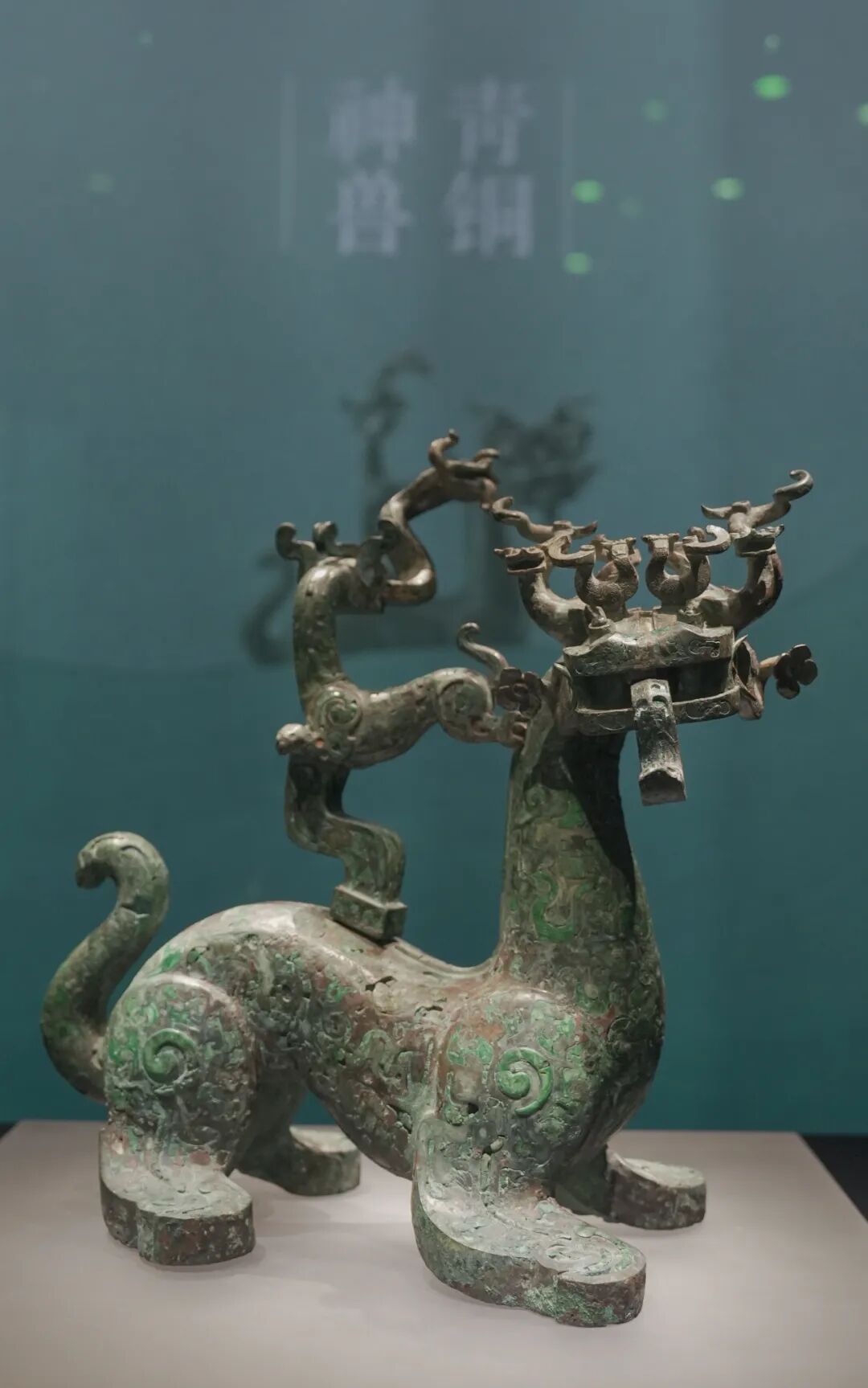
Exhibition site
Unearthed at Wayaoshan in Xiaobu Village, Lizhu Town, Shaoxing, Zhejiang Province, this primitive porcelain animal-faced ding from the Warring States Period imitates the shape of a bronze ding. A beast head is sculpted on one end of the rim, while a running animal is placed on the other end. Its head is visible above the rim, its mouth open and tail curled, as if it is about to eat the contents. Its lustrous, bluish-yellow glaze makes it a rare gem among primitive porcelains.
The luxurious and intricate sets of gold and silver jewelry worn by Ming Dynasty princes, adorned with emerald and pearls, were a striking sight, complemented by the painting "Lady Playing the Flute" on the exhibition wall. Numerous photo-taking spots throughout the exhibition hall drew visitors for commemorative photos. Among them, a ruby-encrusted gold crown unearthed from Jiangjun Mountain in Jiangning, Nanjing, is a masterpiece of Ming Dynasty goldsmithing, recreating the era's most fashionable trends.
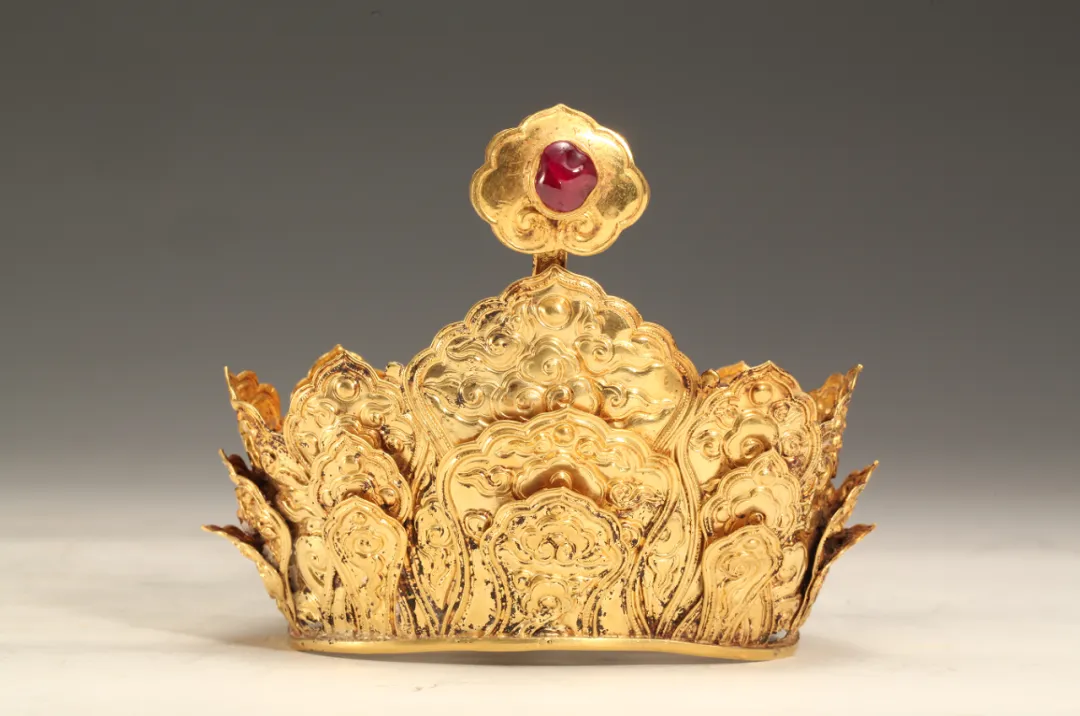
A gold crown inlaid with rubies from the Ming Dynasty, collected by the Cultural Heritage Protection Center of Jiangning District, Nanjing
"Panlongcheng was the ruling center established by the Xia and Shang dynasties in the Yangtze River Basin. It brought bronze civilization to the Yangtze River Basin and promoted the civilization process in the Yangtze River Basin." Wan Lin, former director and research curator of the Panlongcheng Ruins Museum, said that the exhibition continued the museum's consistent pursuit of annual exhibitions in recent years. On the basis of solid academic support, it carefully selected cultural relics that best fit the exhibition theme from many domestic cultural and museum units, including many newly unearthed cultural relics, while continuously improving the aesthetic performance of the exhibition effect.
The exhibition space creation and exhibition hall art design are refreshing, in line with the era characteristics of the exhibits, creating an immersive and contemporary exhibition space.
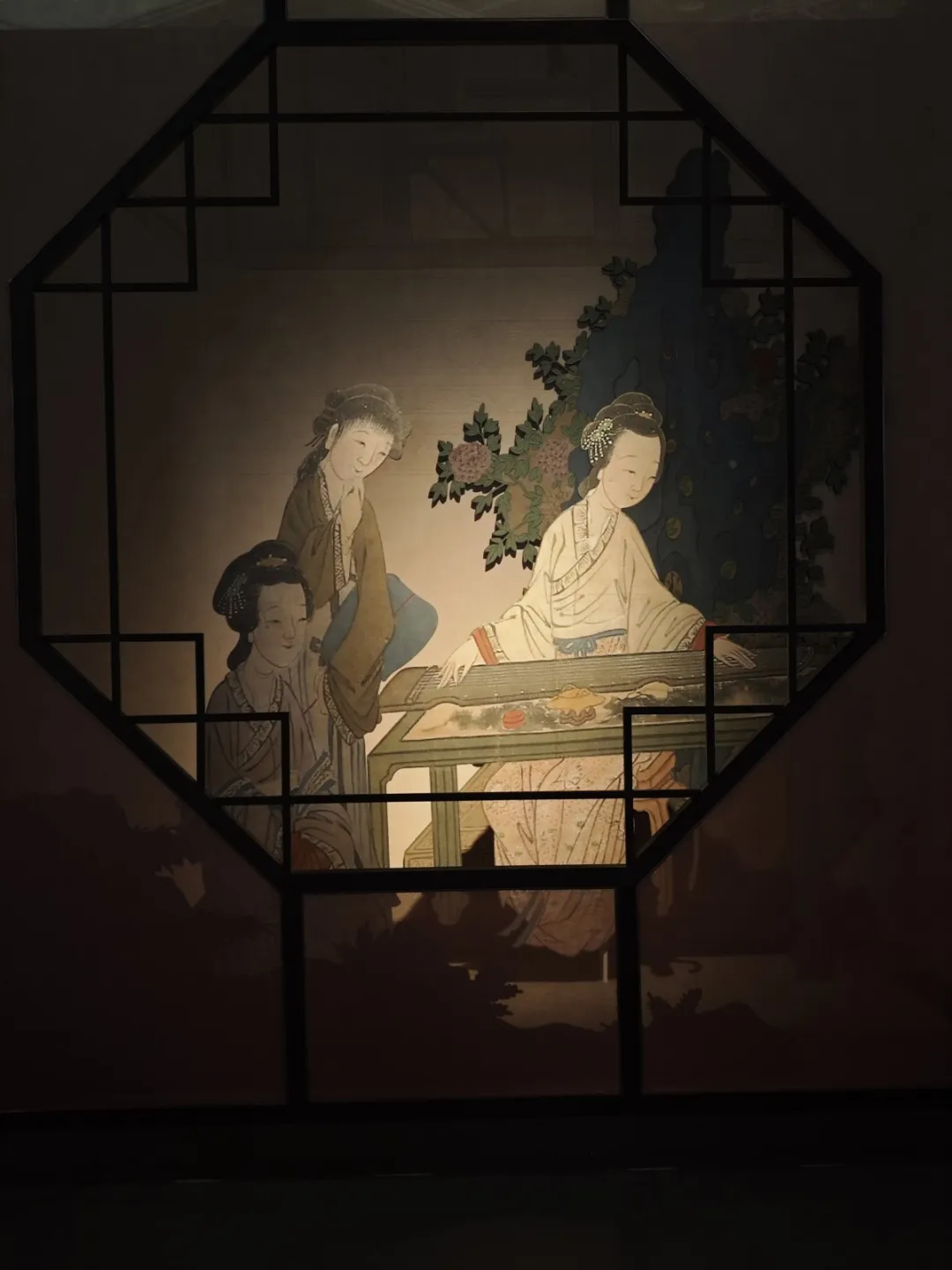
Exhibition site
From Neolithic jade, Chu lacquerware, Shang and Zhou bronzes, to Song Dynasty celadon, Ming and Qing gold hairpins... one exhibition line shows the superb craftsmanship that has continued for thousands of years along the Yangtze River, and also shows the rich and colorful cultural features of different regions in the upper, middle and lower reaches of the Yangtze River in different periods.
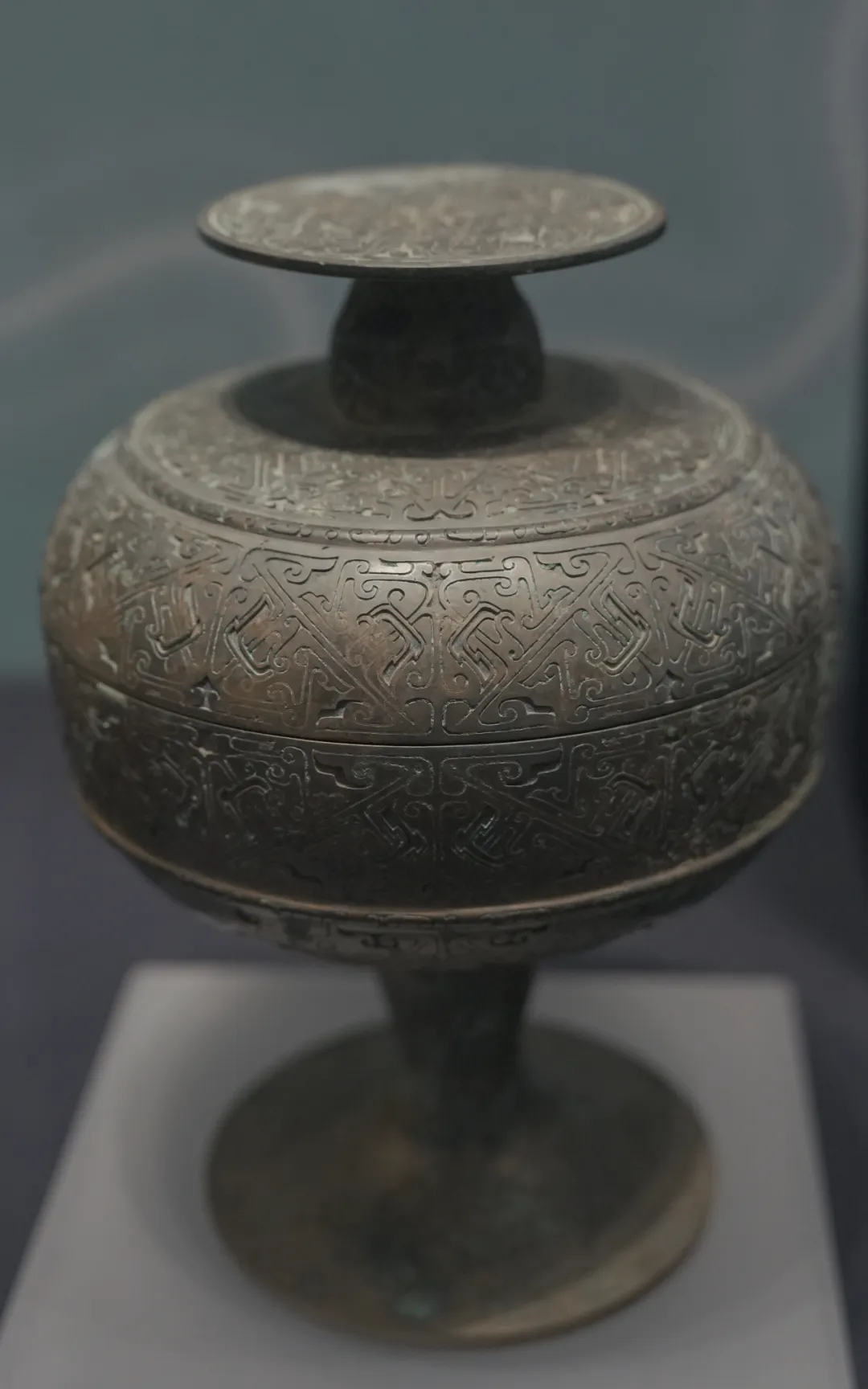
Exhibited cultural relics
The exhibition will run until January 4, 2026.
(Some of the information and pictures in this article are from the organizer)
